In 1st grade, one of our biggest math standards is Fact Fluency! Fact fluency is the ability to solve math problems efficiently and accurately. We want our first graders to be able to solve addition and subtraction facts within 10 fluently by the end of the year. This does NOT happen overnight! Before we EVER start working on knowing our addition facts automatically, we always learn strategies for addition first.
In this blog post, I’m going to share tips specifically for developing addition fact fluency and teaching addition strategies in 1st grade, however the same ideas can be applied for subtraction or any operation!
Fact Fluency and Addition Strategies: Where do we start?
Before students are able to solve facts fluently and automatically, they need to develop concrete understanding of:
- How the operation works
- Strategies for solving
During our Beginning Addition Unit, I like to introduce one strategy at a time and provide a lot of practice with each one.
I use slides from my Addition Strategy Unit to introduce each new strategy. We practice it whole group first and then at the teacher table during small group instruction.

You can read more about our math block schedule in this blog post!
After the strategy is introduced, I add it to our strategy wall for students to refer back to. Whenever students are stuck on a problem, I always encourage them to look at the wall for a strategy they could try!
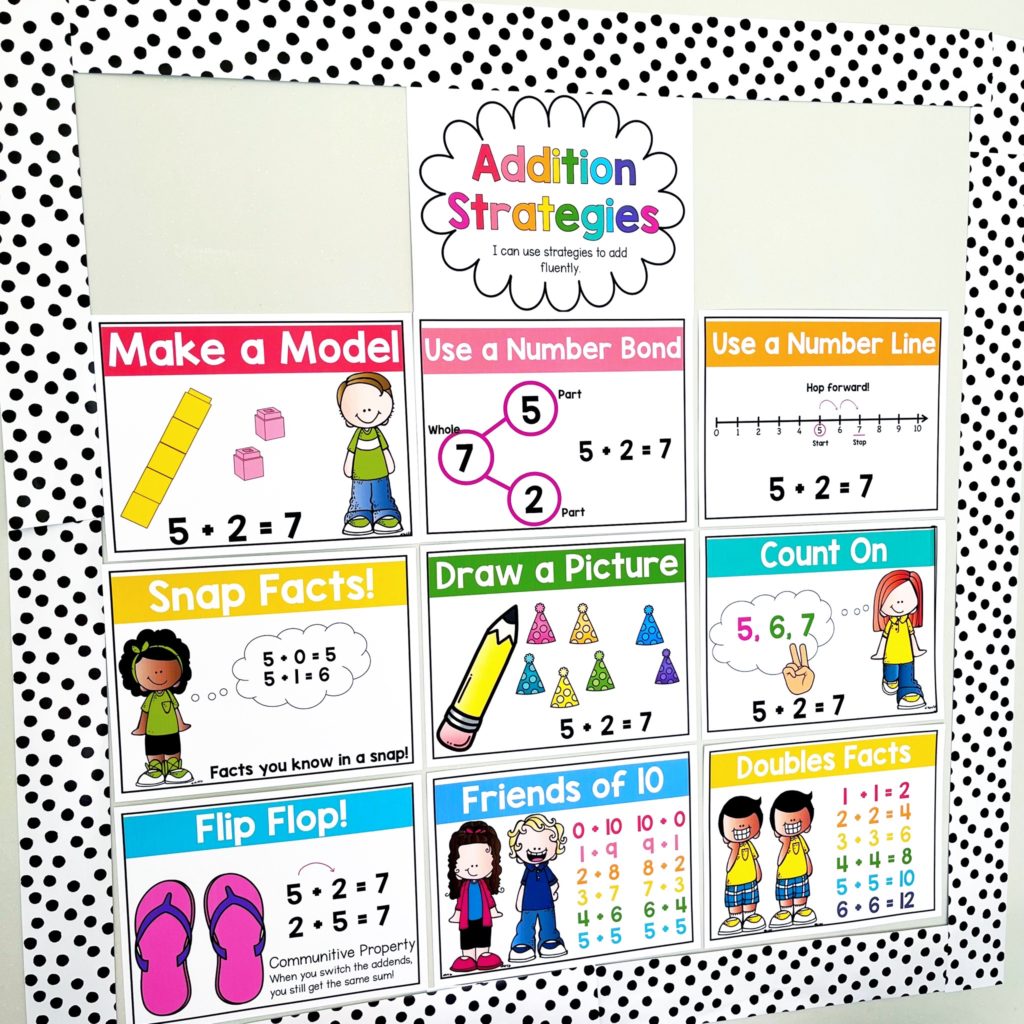
I also keep a ring of mini posters at my teacher table to use during small group lessons.
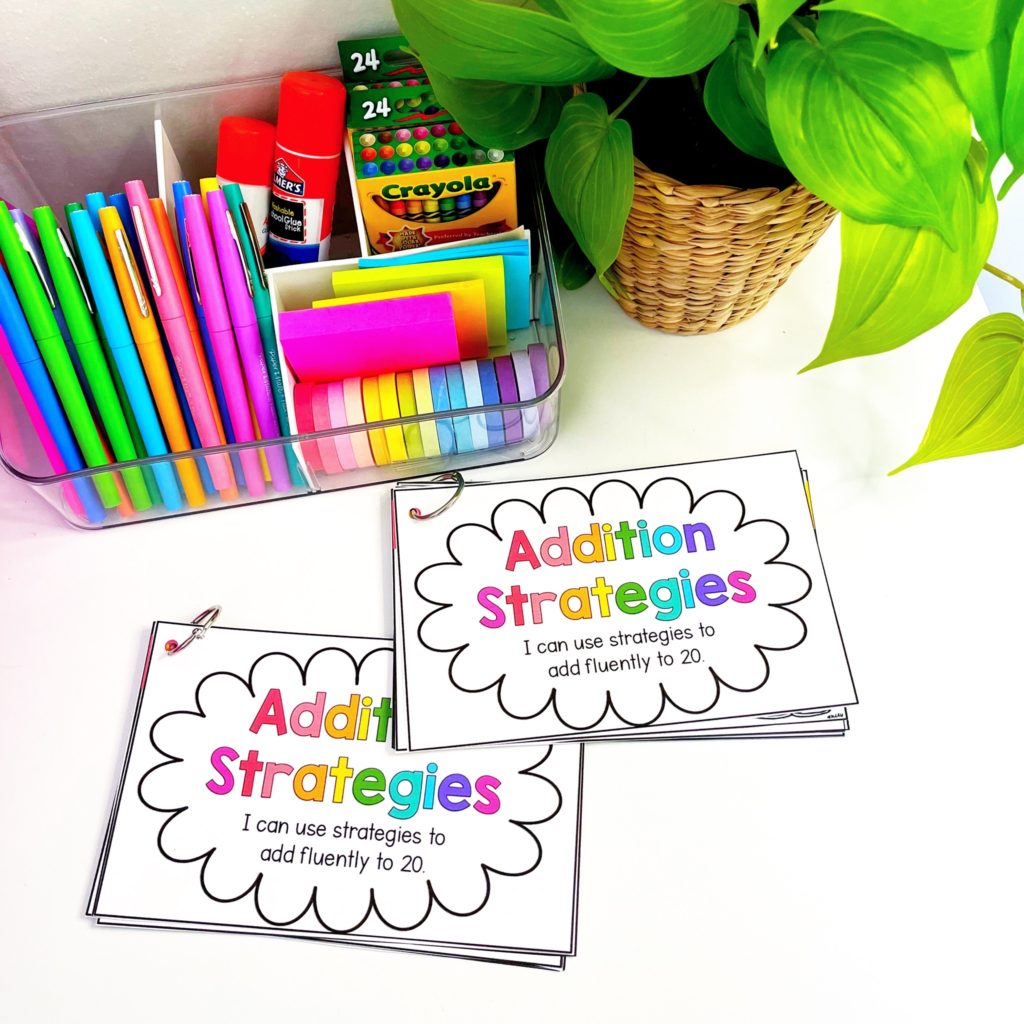
What Addition Strategies Should I Teach?
With any math skill, I always apply the CRA model: Concrete, Representational, Abstract
I start with the most concrete strategy: Using manipulatives to make a model
I like to have my students get up and act out real world story problems during our whole group mini lessons.
You can read more about our mini lessons here!
Then when students visit my teacher table, we use counters or cubes to represent math story problems.
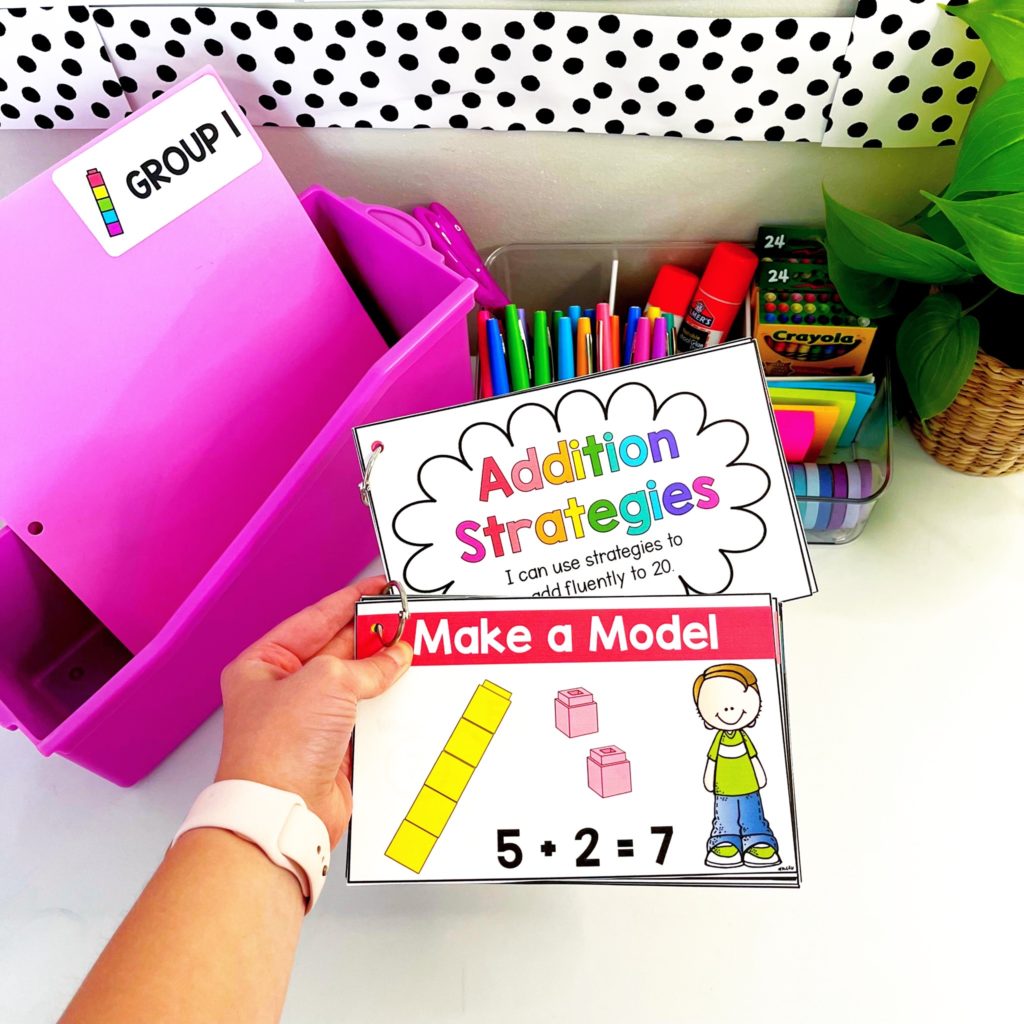
I like using visuals such as number bonds or part part whole mats with the manipulatives to give students a deeper understanding of what is happening within an operation! This is helpful when we get to more complex problems with missing parts or missing addends!

I’ll also make a big, life size ten frame on our classroom rug with painters tape or use hula hoops for a life size number bond and we use these to act out the story problems! Students are able to see groups being combined which is amazing for concrete understanding!
Next, we move on to representational strategies:
- Drawing Pictures
- Using a Number Line
- Counting On
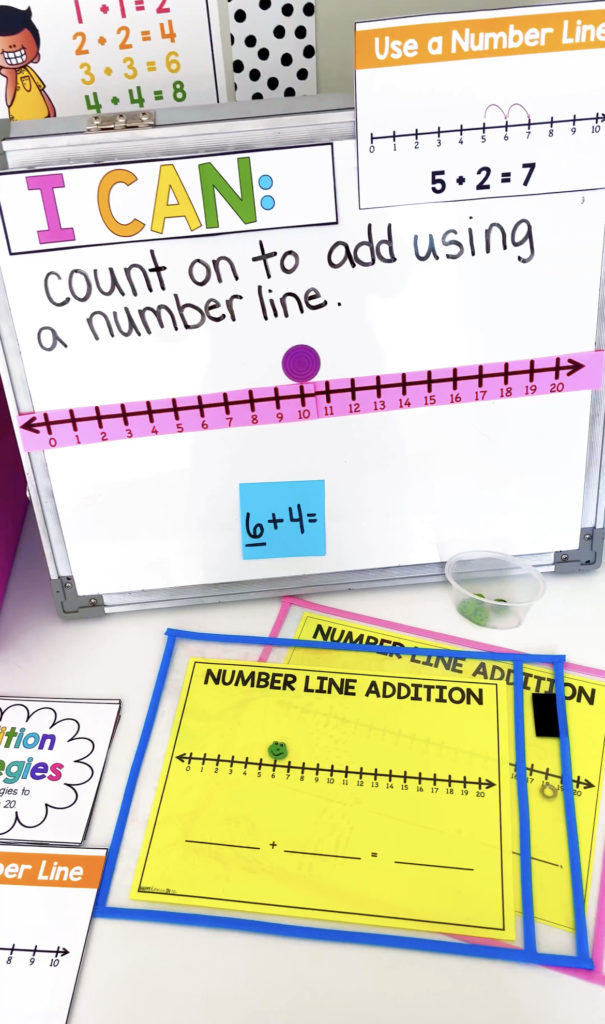
These strategies require students to apply knowledge of the operation, but still give support for solving.
Finally, we learn more abstract addition strategies such as:
- +0 +1
- Doubles Facts and Near Doubles
- Friends of 10
- Flip Flop Facts (or the Commutative Property of Addition)
- Making a 10 to Add
With all of these strategies, we always practice with concrete manipulatives first, then move to drawings, then move to learning to use the strategies to help us remember facts automatically! Adding these mental math strategies to their strategy toolbox is essential!
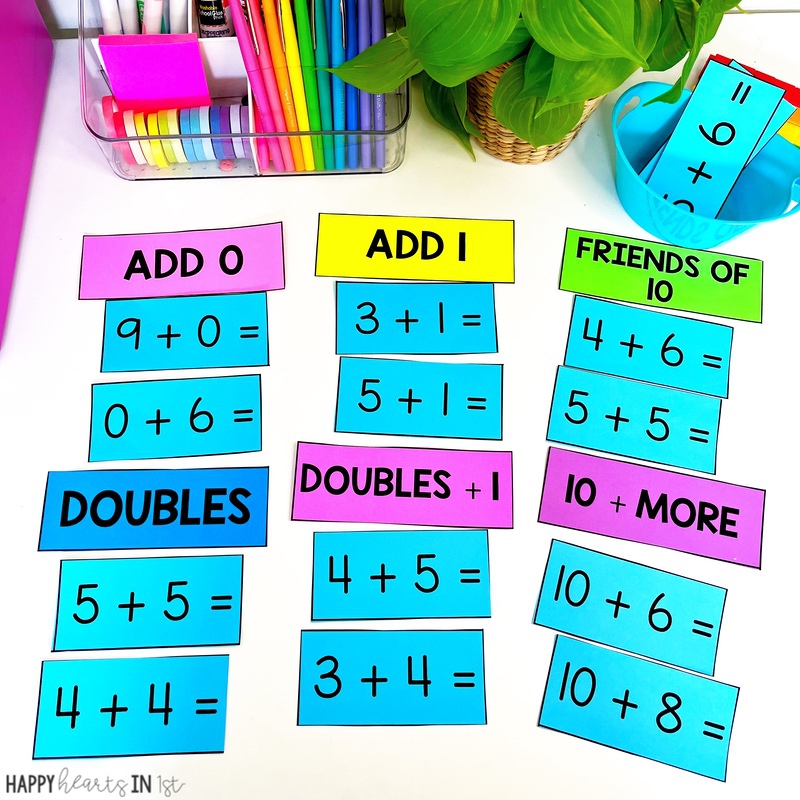
I like to give each student an Addition Strategies reference sheet to keep in their math folders for easy access! You can grab it for free inside my Addition Fact Fluency Center! Find it here!

Want to grab my Addition Strategies unit for 1st grade filled with mini lesson slides, small group activities, math centers, math strategy posters and more? Check it out here!
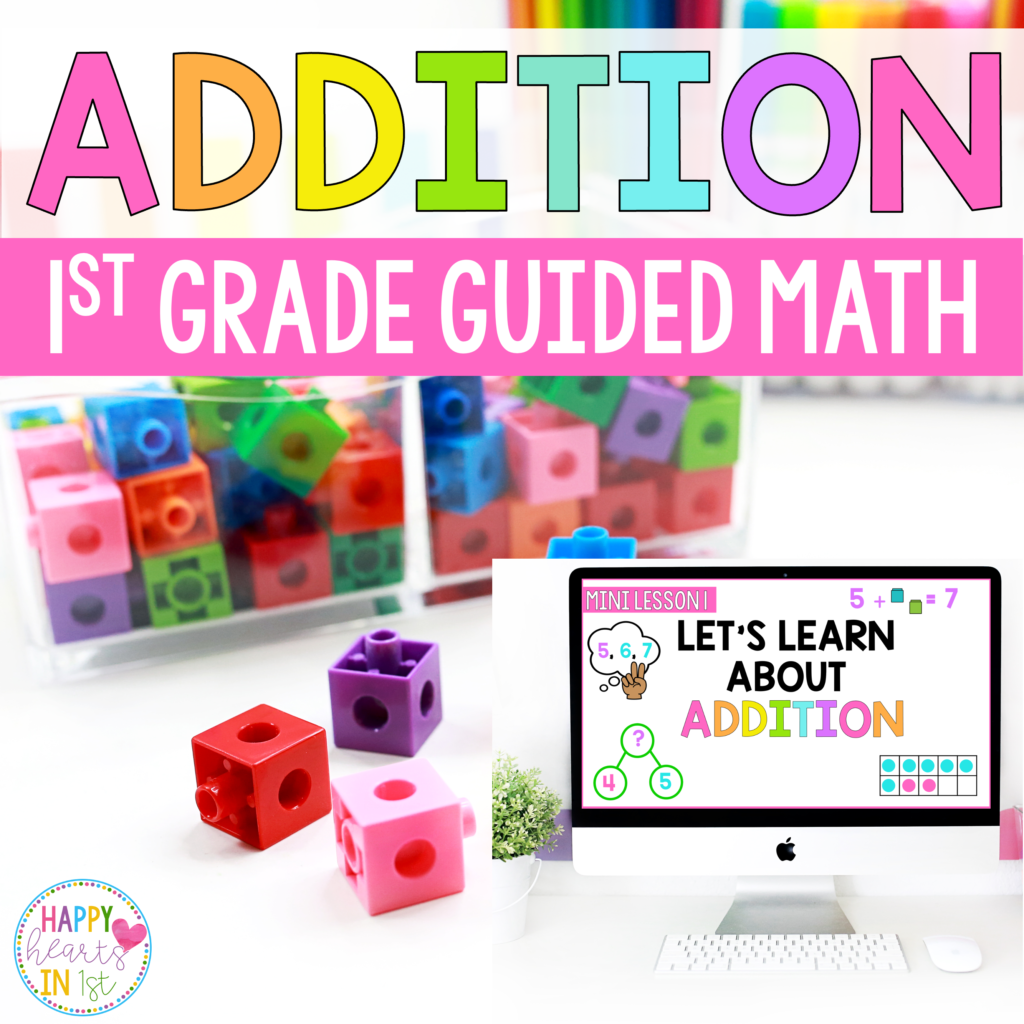
Next Stop: Fact Fluency!
Once students have a good understanding of using strategies to flexibly solve addition facts, then we move on to working on fact fluency!
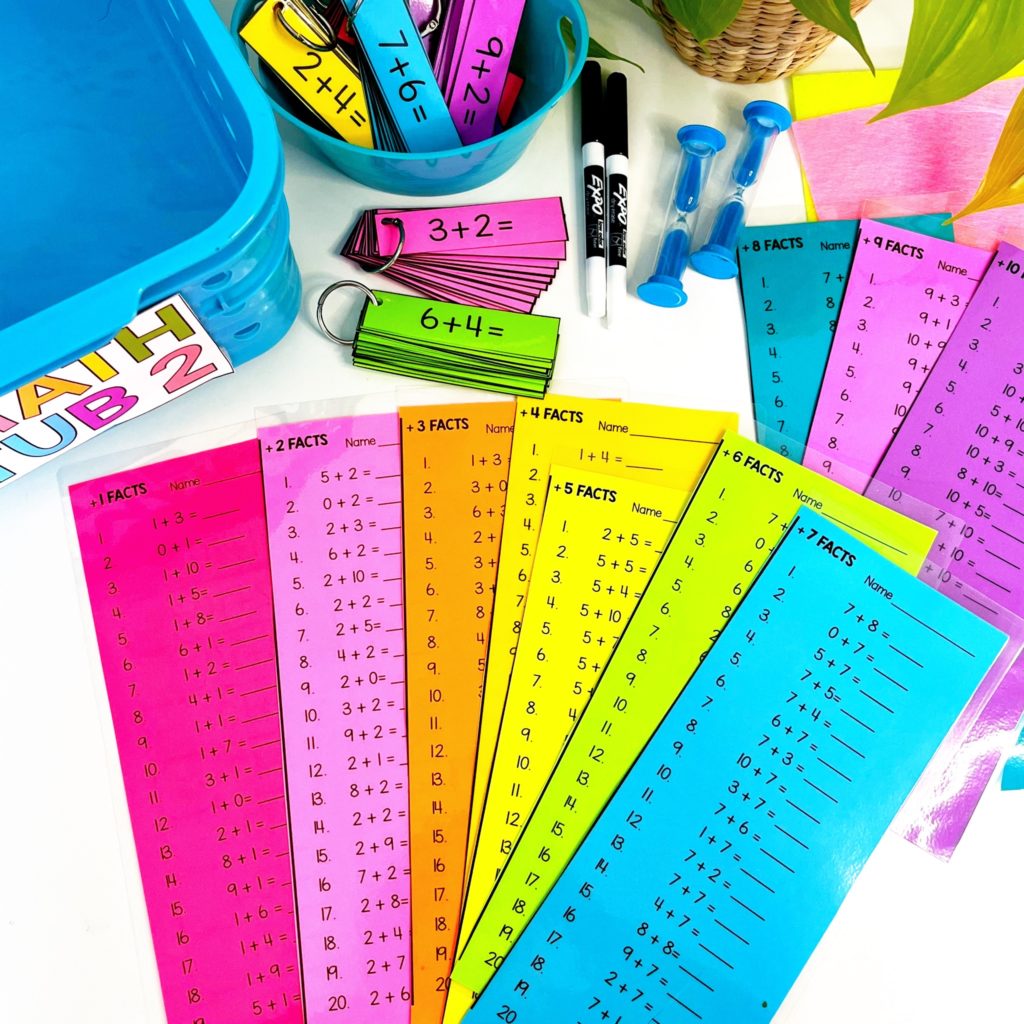
The biggest factor for our first graders gaining fluency with facts is exposure! They need to see the facts over and over again for them to stick in their brain. I like to build in as much exposure as possible every day.
I always tell my students that we can transform addition facts into SNAP FACTS! These are facts our brains just know in a snap! My goal is for them to start thinking about which facts are already snap facts and recognize when a new fact becomes a snap fact.
5 FUN ways to develop fact fluency:
1. Have a Fact Fluency Math Center
One of our math centers that students visit each week is a fact fluency center!
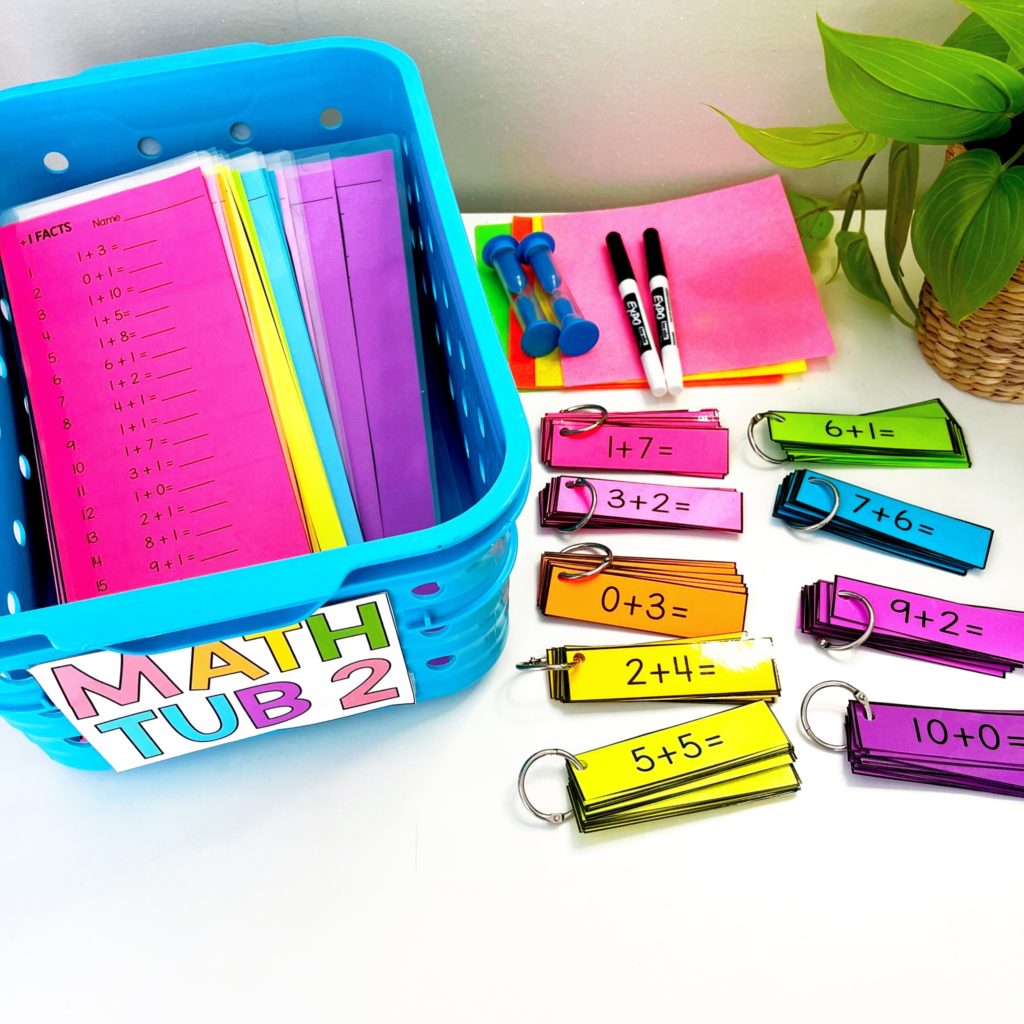
In this math tub I keep flash card sets, timers, laminated fact races, and dry erase markers! I love that I can prep it once and then use week after week.
Students can quiz their math partner using the flash cards and use 1 minute sand timers to see how many facts they can complete on the fact race! I like using this instead whole group timed tests. This gives them the opportunity to answer facts quickly without the pressure and stress a timed test can bring!
I always talk to my students about how our goal is just to do a little better each time. My kids absolutely love trying to beat their best score and finish more problems before time runs out. I also make this a fast finisher activity during other parts of the school day because students love visiting the center so much!
You can grab my free Fact Fluency Math Center Here!
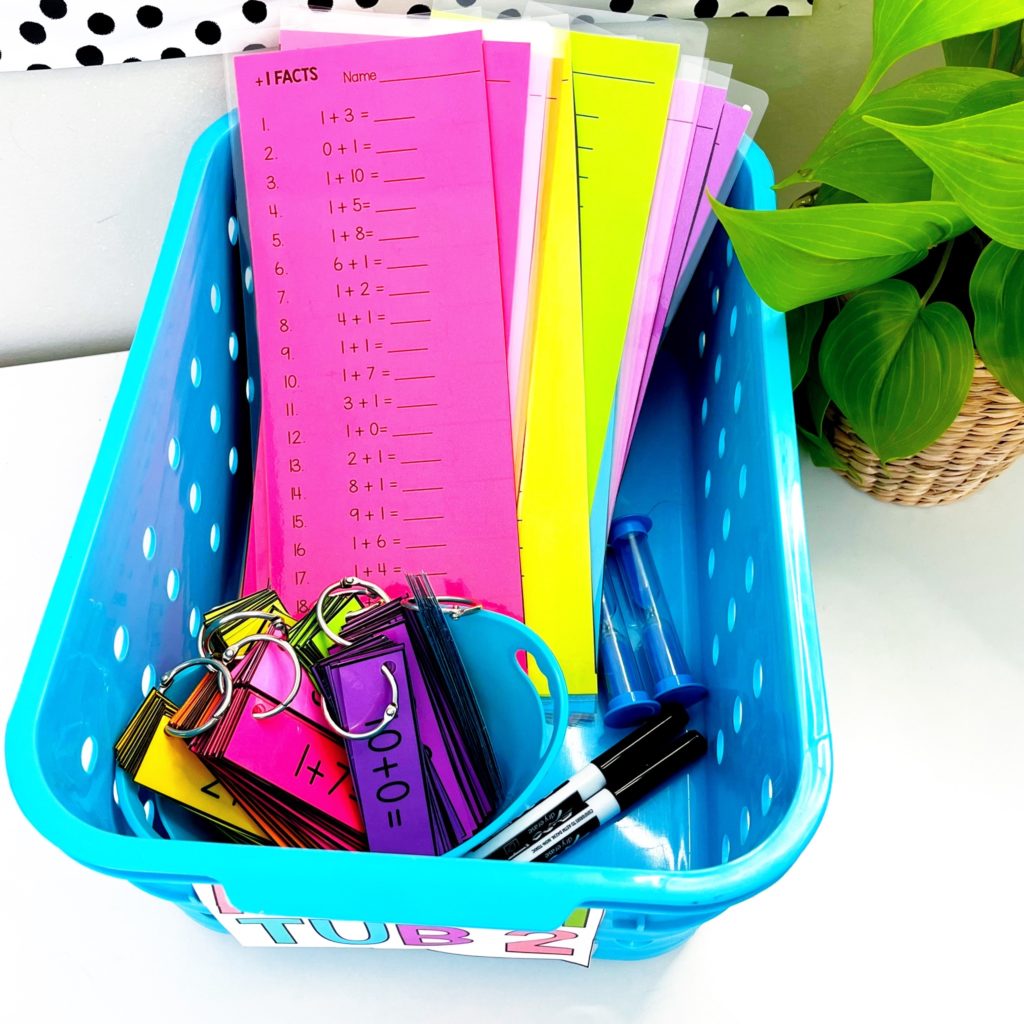
Check out how I made my Fact Fluency Center!
You can also grab the Subtraction Fact Fluency Center Set here!

2. Addition Fact Games
Along with our fact fluency center, I like to incorporate addition fact fluency games as much as possible in our math tubs, as small-group warm ups, or whole group activities.
I like doing Solve the Room hunts! Grab the freebie here!

Students also like playing memory match with a partner!
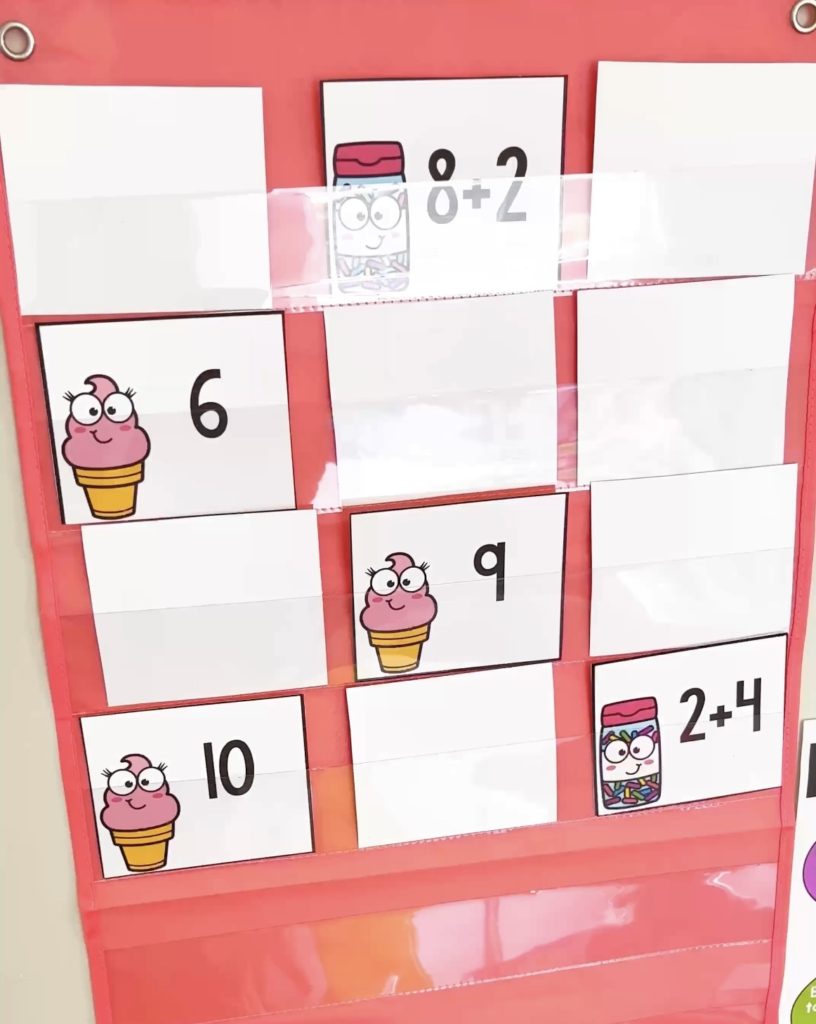
I use the same cards from Memory Match and do a find my partner whole group activity! I give each student a card and students walk around the classroom looking for their partner.
You can find Addition Math Match Here!
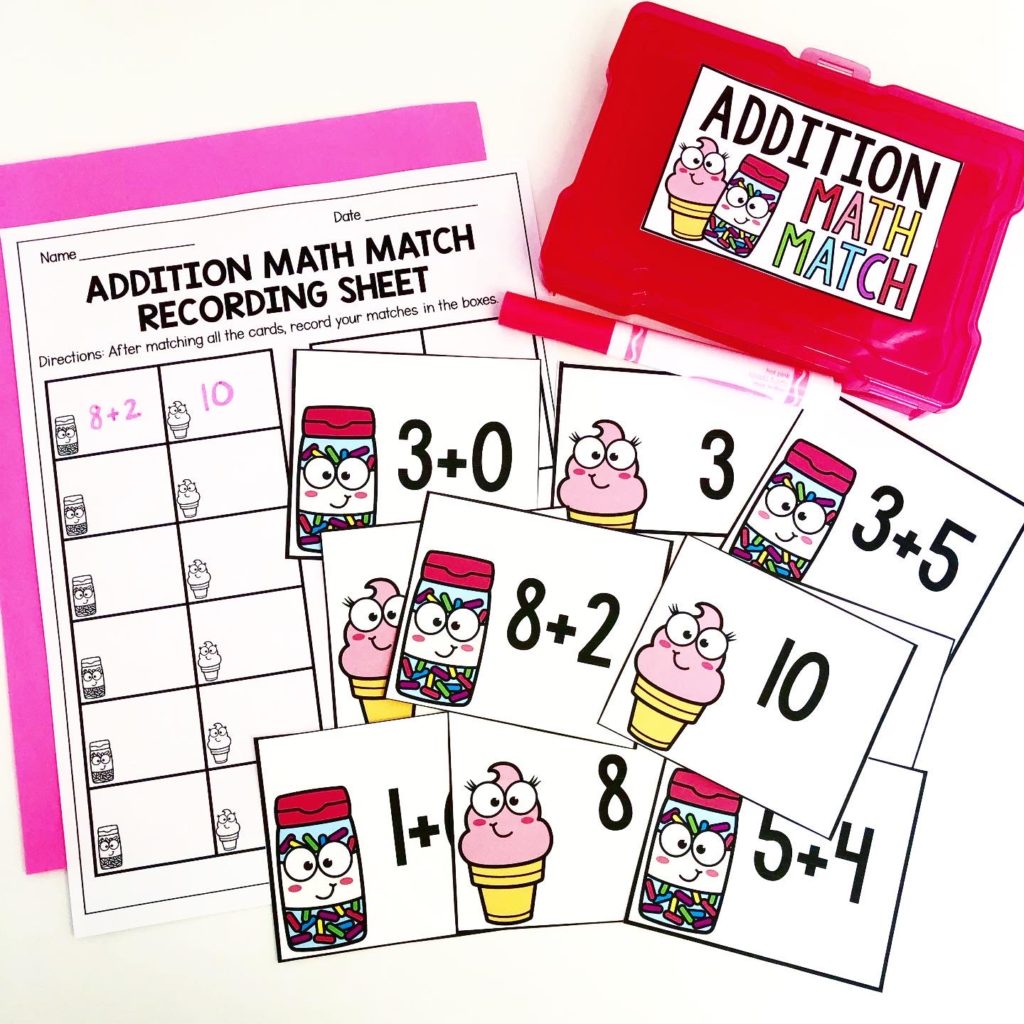
3. Songs and Movement
There are so many amazing Addition fact songs on YouTube that I use daily! We get up from our tables and have movement break from whatever we are working on! Students love moving and chanting along with the video.
Here are a few of our favorites:

4. Online Practice
Using technology is a great way to incorporate daily fact practice. During our guided math rotations, my students visit a technology station each day. This is the perfect opportunity to include some daily fact fluency practice!
Here are a few online fact fluency programs I like:
- Reflex – Amazing for differentiated fact practice and is super engaging for the kids!
- Prodigy Math – (FREE OPTION!) We usually use this one as an incentive or for Fun Friday because the kids LOVE it so much!
5. Color by Code
My first graders absolutely LOVE color by codes! They are such a fun way to get more exposure with math facts!

In my classroom I use them as:
- Morning Work
- a Math Center
- a Fast Finisher Activity
- or Independent Practice
Students are super engaged and don’t even realize they’re practicing math!
You can grab Differentiated Color by Code for the Whole Year here!
I hope this post gives you some ideas for teaching Addition Strategies in 1st grade and developing fact fluency in your classroom! My number 1 tip is that if a student is struggling, don’t be afraid to go back to the basics! Get out the manipulatives and numberlines! Finally, once students have concrete understanding and flexible strategies, fact fluency will become so much easier to master!


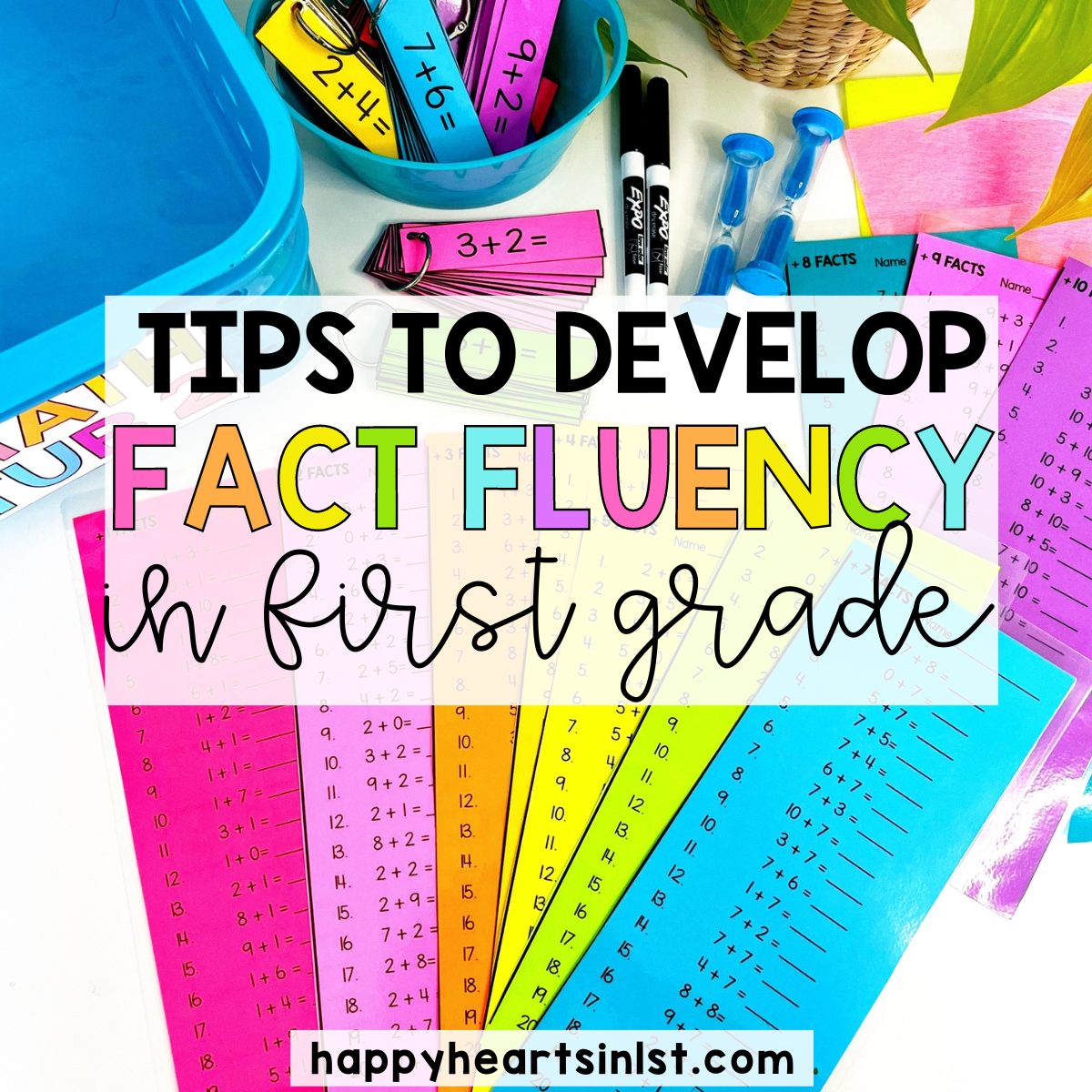
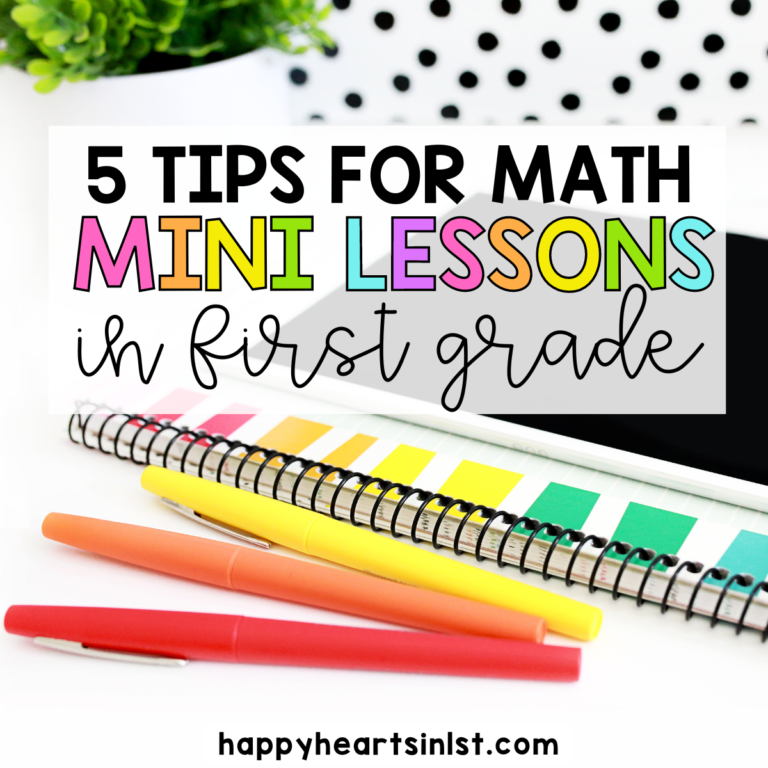
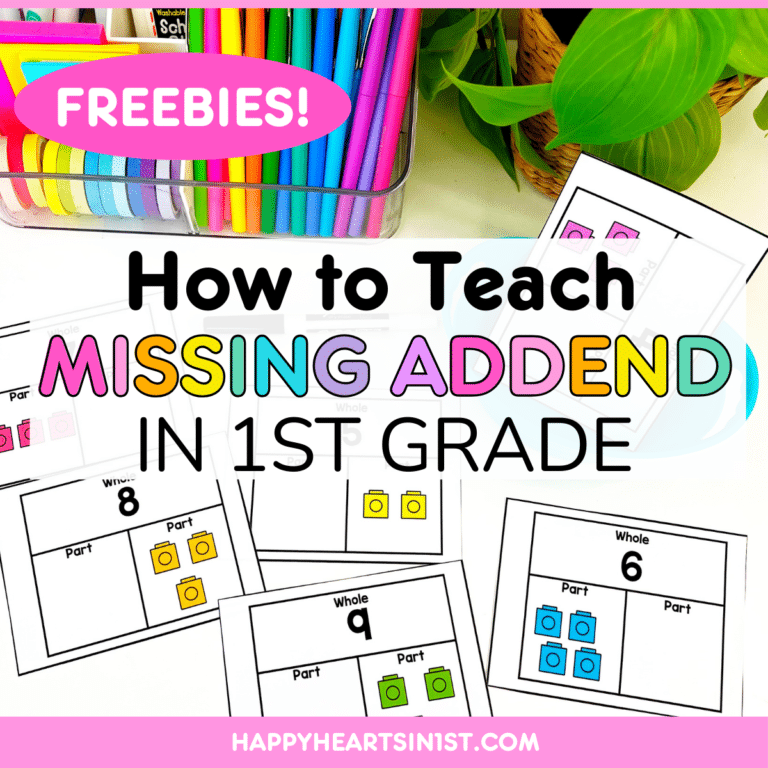
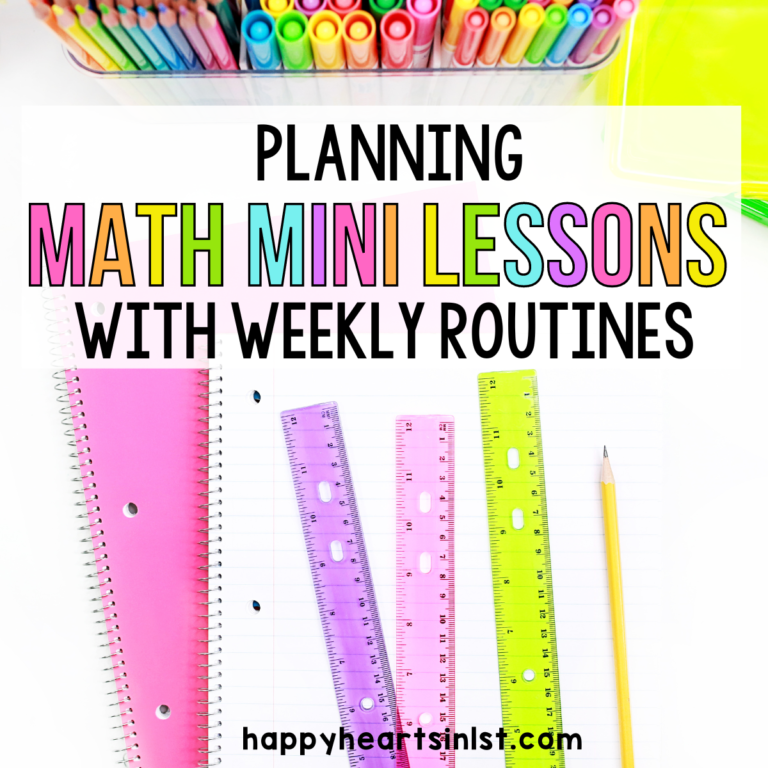
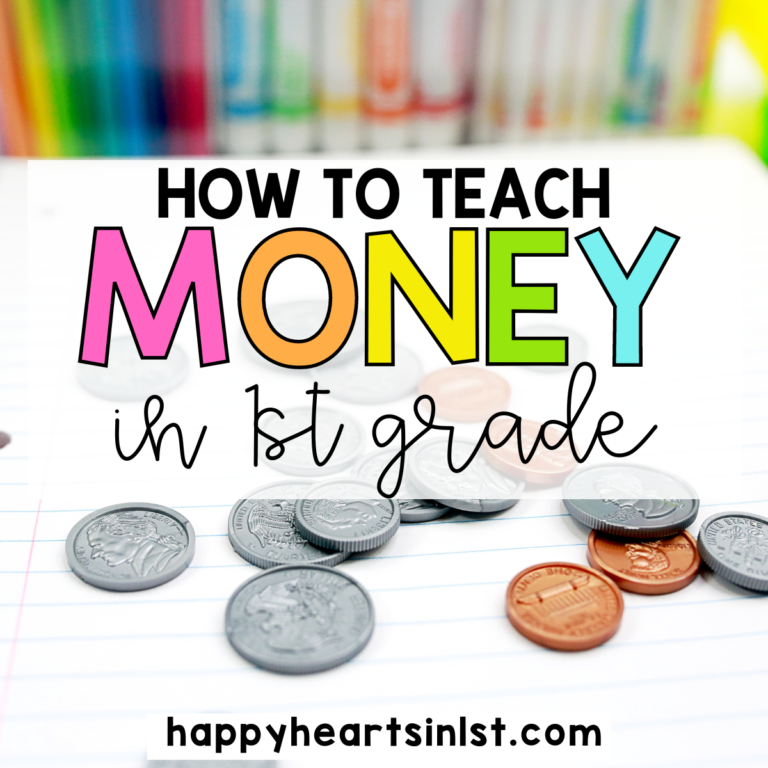

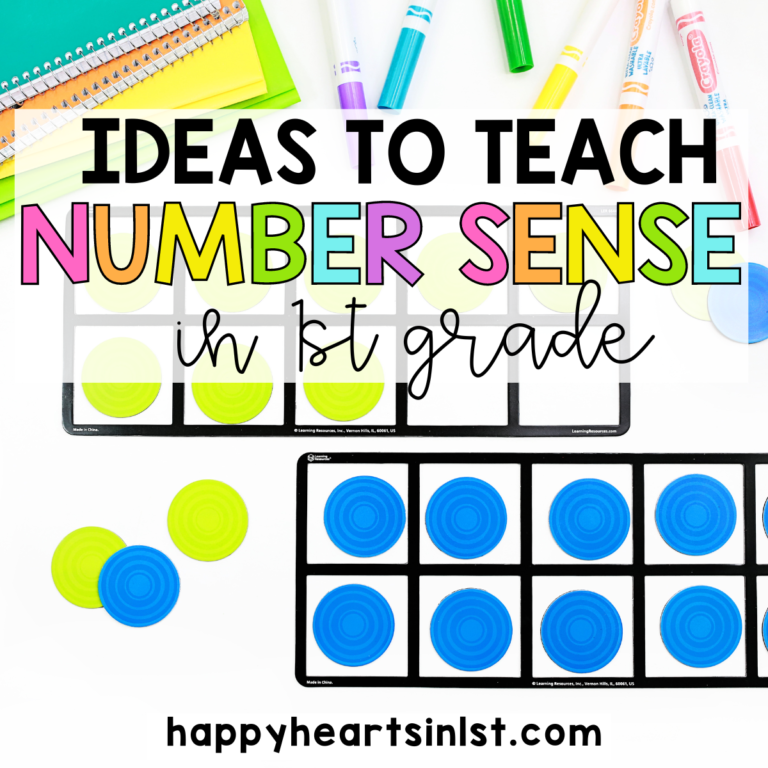

Do you have this for subtraction as well? Or one with mixed facts?
Hi! I don’t currently have subtraction available yet, but it is on my to-do list! I’ll update when it is ready!
I have one of your bundles and I don’t see the task cards for the Solve and COver bundle.
Here is the link for Solve and Cover! https://www.teacherspayteachers.com/Product/1st-Grade-Math-Centers-Solve-and-Cover-Math-Games-Task-Cards-for-the-Whole-Year-6468954